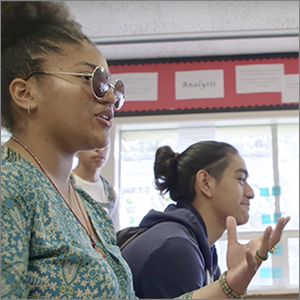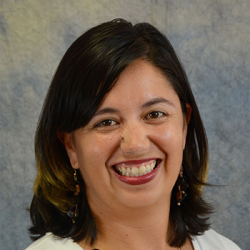
In my work in my own school district, as well as across the country as one of BIE’s National Faculty, I have discovered a troubling trend. When working with teachers of students who are on track for graduation, reading at grade level, and generally achieving the standards, teachers are thrilled to try out PBL in their classrooms. On the other hand, when working in schools where students are struggling in any variety of ways, teachers often say, “My students can’t do that.”
I believe that high quality PBL is the best way to educate students. I believe it opens doors to learning in the classroom in ways that traditional teaching and learning does not. I believe it better prepares students for college and career success than other teaching models. If we believe these things, then we must believe that the struggling students, the students farthest from opportunity, the students reading farthest below grade level, these students deserve high quality PBL classrooms as much as, if not more than, students who are already experiencing success.
There are a multitude of reasons that students farthest from opportunity thrive in PBL classrooms. Here are three:
1. Embedding rigorous academic work into real-life situations makes learning more real, and more accessible, for all students.
If a student is struggling to conceptualize difficult math concepts in the classroom, and sees no purpose for it outside of the classroom, there is little motivation to take risks and try to figure it out. Especially if this is a student that has struggled year after year in math, moving along with D’s, and never quite grasping the content. PBL helps break down the walls of the classroom to give a view of how what they’re learning might be applied outside of school. By seeing experts using the same math concepts in their careers, struggling students can understand that learning isn’t just about passing a class. Embed the skill in a project that highlights your students’ interests. Then, students will see how useful it will be to master that skill. Rather than being an abstract concept, it will take on real meaning for students so it is easier to grasp, moving it from the abstract world of the classroom to the concrete world of work or play.
2. PBL offers opportunities to fail safely, revise work, and find success.
If a student has endured years of schooling, struggling to keep up and understand the content, they’re naturally going to be hesitant to take risks. They’ve learned that they will be assigned a test or an essay, turn it in, receive a grade and, successful or not, we will all move on. Critique and revision in a project gives students the chance to try something and be less afraid that they won’t get it right the first time. Once they figure out that they can turn something in, get feedback, make it better, and continue that process, they’ll become much more likely to jump into learning with a growth mindset. By providing meaningful feedback and training students to do so with each other, we are teaching them that the learning is what matters, not the grade.
3. Students who have struggled in school are often students who don’t see themselves, or hear their perspectives, in positions of power in our society. PBL can lift up their voices.
Recently, I had the pleasure of presenting my project, “Revolutions on Trial”, at PBL World 2018 with a few of my students. One student in particular, Star Key (shown above), spoke about how throughout her schooling, she never thought she had anything meaningful to say. In the classroom, in the media, in politics, the voices she heard amplified were white, middle- or upper-class voices. They were male voices. They weren’t anything like her. When we learned about revolutions in World History class, she was able to choose a revolution that was meaningful to her, the Haitian Revolution. Rather than reading a textbook, she was able to explore the revolution through primary sources, documentaries, and paintings. Instead of regurgitating what she had learned, I asked Star and her peers to form an opinion about the revolution and to put it on trial. To decide if it had, indeed, helped the people it set out to help. When Star took the stage in the mock trial, she spoke passionately and knowledgeably about the complexities of the Haitian Revolution. When she took the stage at PBL World, she spoke similarly about how that project allowed her to see that her voice was important and that her opinions mattered. We can use PBL to amplify our students’ voices. All students deserve that.
When reflecting on my own practice, I’ve come to realize that when I have been hesitant to implement PBL, and I’ve used the excuse that I need to teach more skills, that my students aren’t ready, that it won’t work with them, it is because I’m not sure I can do it. It has nothing to do with my students’ abilities, but my own. I owe it to my students, and we owe it to all students, to take risks, try new things, and embrace teaching with the same growth mindset we’d like to see in them. If some students deserve the rich learning provided by high quality PBL, then all students do!
Want to learn more about PBL? Check out our books.
Register now for PBL World 2019.

